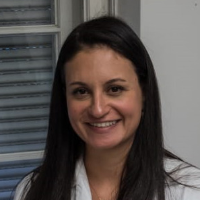3rd International Conference on
Dermatology & Skincare
April 16-17, 2026 | Chicago, USA

Address: 9300 Bryn Mawr Avenue, Rosemont, IL 60018, United States
ICDS 2026

Innsbruck University, Austria
Abstract:
Cutaneous squamous cell carcinoma (cSCC) represents one of the most common types of cancer among individuals with fair skin types. The incidence of cSCC has significantly increased over the past fifty years, primarily attributed to lifestyle changes resulting in heightened sun exposure, a major risk factor for this tumor type. While early-stage cSCC is often curable through surgical excision, metastatic cSCC carries a poor long-term survival rate due to the inefficacy of systemic chemotherapy. Consequently, there is an urgent need to elucidate new druggable targets and pathways in cSCC.Our research aims to investigate how senescent fibroblasts in the dermis contribute to the development of cSCC. Using a model of UVB-induced senescence of fibroblasts we observed that NIX-dependent mitophagy plays a central role in protecting dermal fibroblasts against UVB-induced damage, thereby maintaining skin homeostasis. Disruption of this protective mechanism leads to cellular senescence and the release of senescence-associated secretory phenotype (SASP) factors, including extracellular vesicles containing mitochondria. These SASP components from senescent fibroblasts interact with the epidermal layer, triggering keratinocyte dedifferentiation and hyperproliferation, thereby disturbing the normal epidermal balance. Furthermore, we suggest that senescent cells in the skin could serve as potential biomarkers for predicting cSCC risk. By confirming this hypothesis, we aim to develop predictive models for the onset and progression of cSCC, facilitating early interventions and personalized preventive measures. Our study not only advances our understanding of the molecular mechanisms underlying cSCC pathogenesis but also holds promise for the development of novel therapeutic strategies to combat this prevalent and potentially lethal form of skin cancer.
Biography:
Maria Cavinato graduated in Biological Sciences at the State University of Londrina, Brazil (2006), where she worked at the MultidisciplinaryLaboratory of Electron Microscopy (LMEM) and investigated the histological and ultrastructural influence of agrochemicals in mouse uterus. She obtained her master's degree in Cellular and Structural Biology at the State University of Campinas, Brazil (2009). During this period she was focused in the ultrastructure and remodeling aspects of connective tissues in mouse pubic symphysis during pregnancy and post-partum, especially concerning the involvement of Galectin-3 and a-smooth muscle actin in this process. In 2012 she started her Ph.D. in “Aging and communication of biological systems” at the Medical University of Innsbruck. Since then she is working at IBA where she studies cellular senescence and molecular mechanisms of extrinsic skin aging. During her Ph.D. and Postdoc, she has worked in partnership with important cosmetic companies such as Chanel (France), Feito Brasil (Brazil) and Cura (Austria). In September 2021 she was appointed group leader and founded the “Laboratory of cellular senescence and skin biology” where she coordinates studies with different models to understand mechanisms of skin aging and skin diseases.
